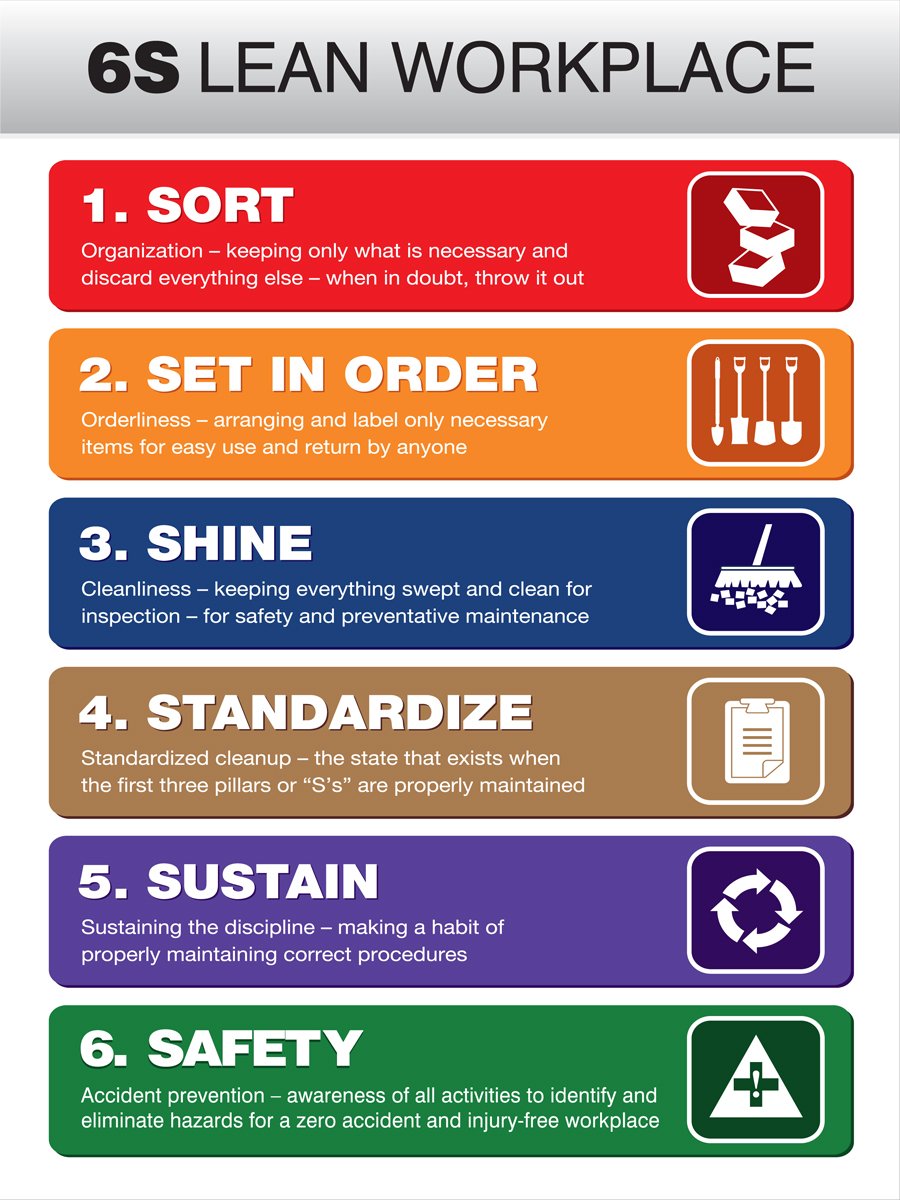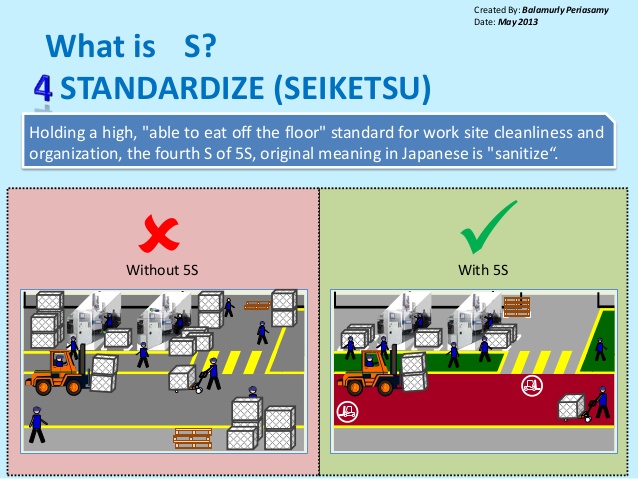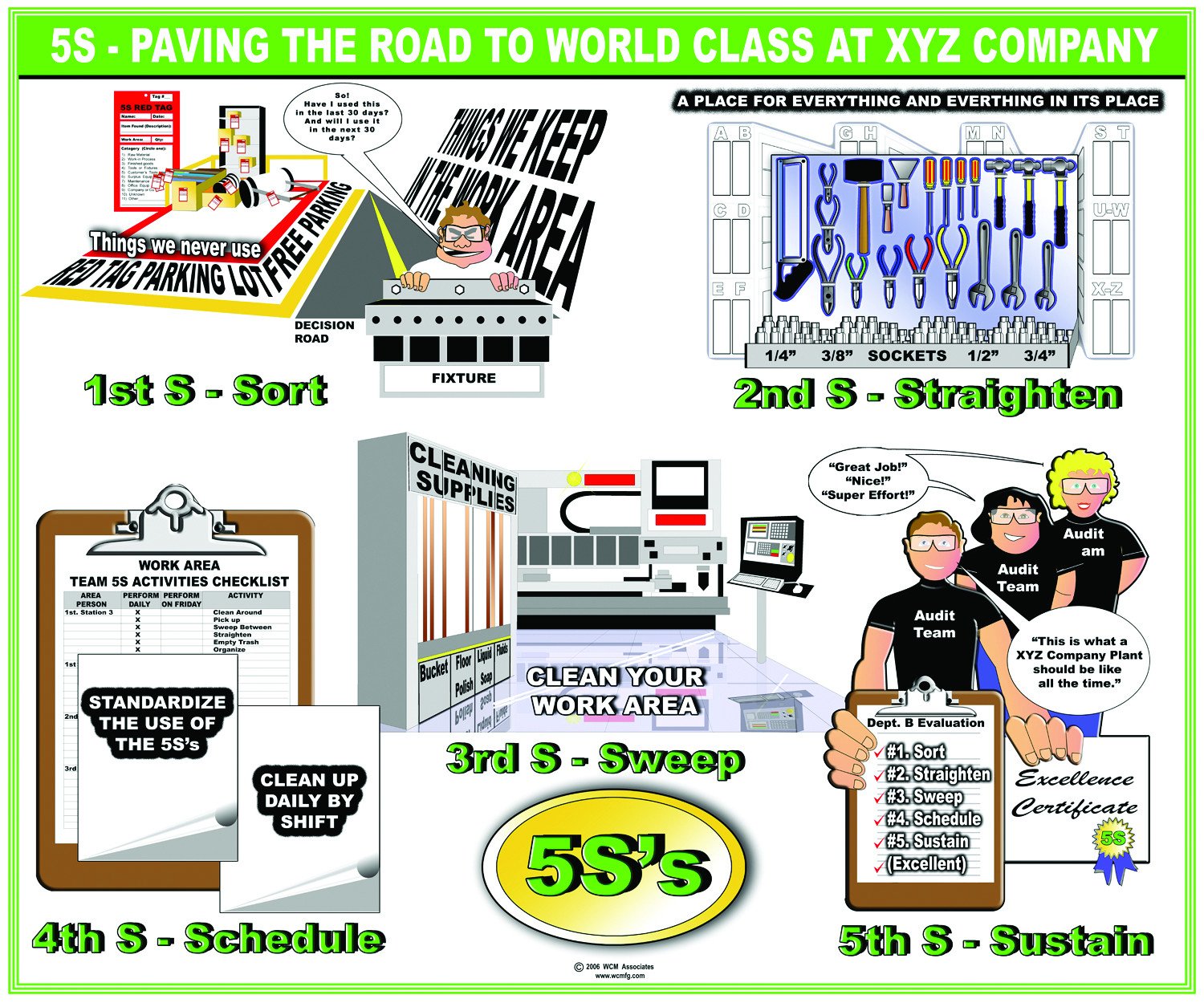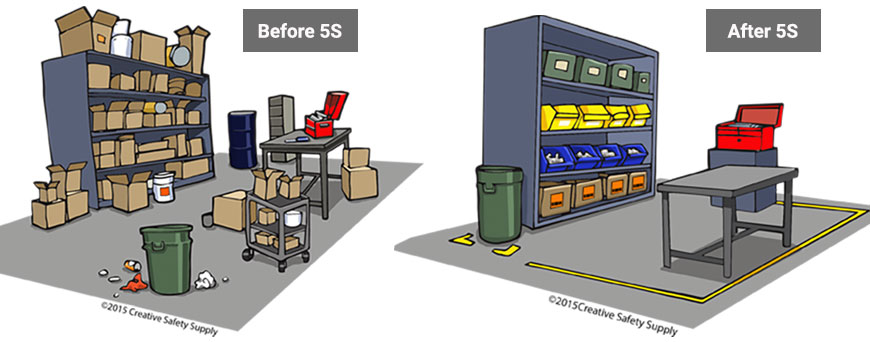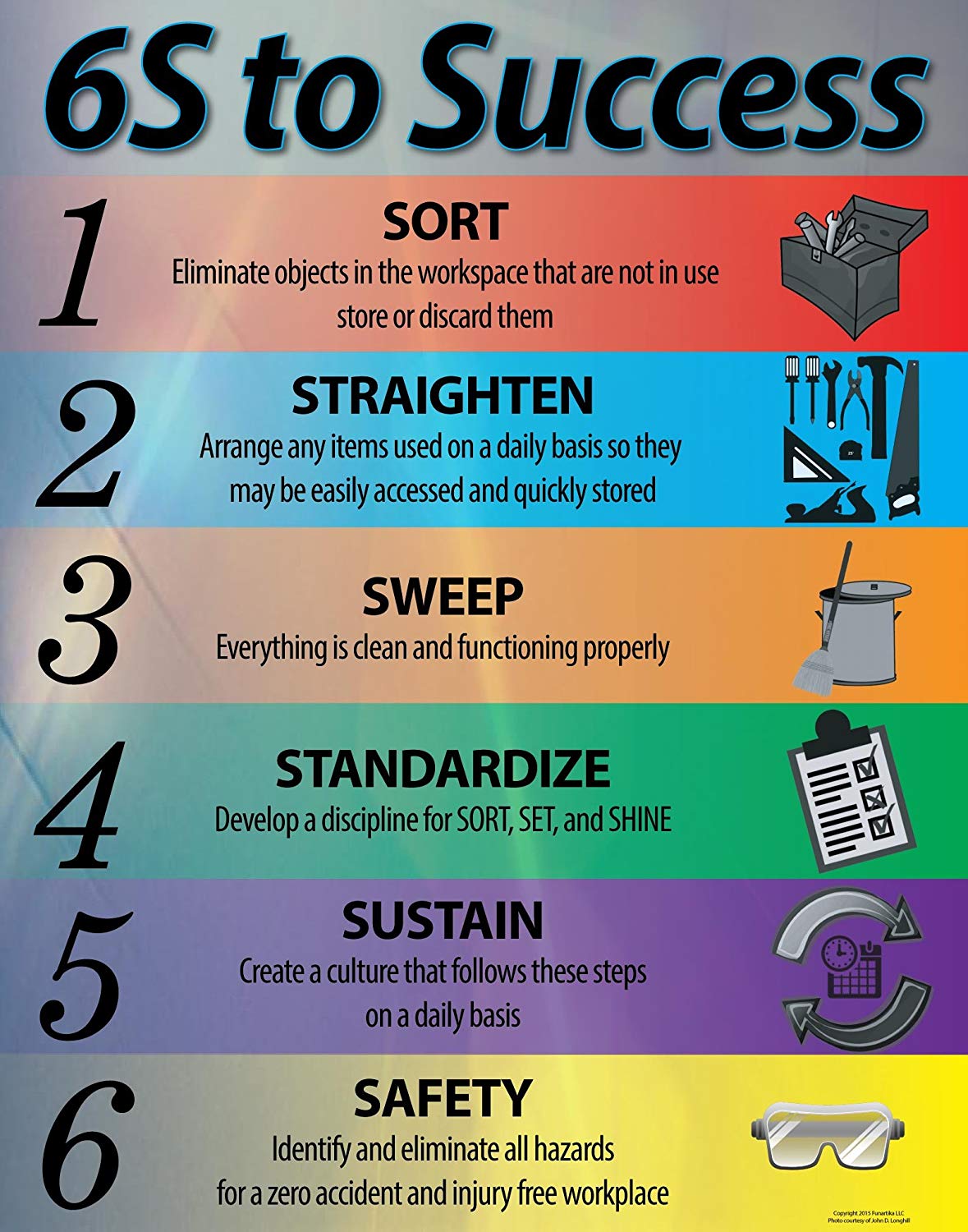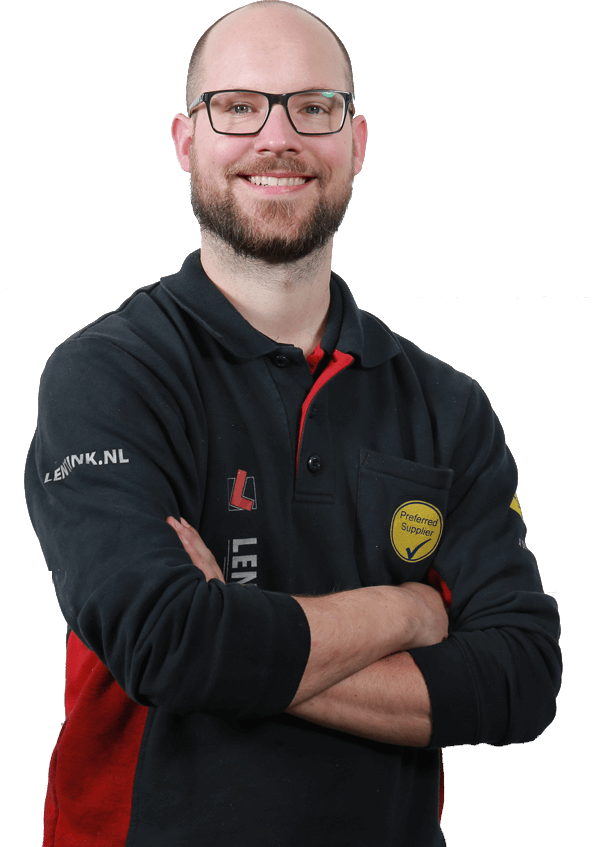5S+SAFETY
As an organization, Lentink has improved in the last 20 years through management methodologies.
The 5s & 6S method
6S, or 5S + 1 is a lean management method. Lean manufacturing focuses on achieving maximum value, with as little waste as possible. By eliminating the chance of waste, the operational costs decrease and the company's profit rises.
How do we apply it to Lentink?
Help from "The 5S system"
Seiri 整理 Sort
Seiton 整頓 Arrange
Seisō 清掃 Cleaning
Seiketsu 清潔 Standardize
Shitsuke 躾 Stand out or Systematize
And 6S then? The 6th S stands for Safety. Safety on the work floor is all about us.
S1: Sort
Sorting or clearing means making a distinction between what is necessary and what is superfluous. The unnecessary must be removed. These include broken or damaged objects and objects that are no longer used or unsafe. The risk of falling, stumbling, bumping, damaging and injuring significantly reduces after removal and the passageways and driving routes offer more space. A practical system for separating objects is to assess all the objects present by asking ourselves the question; do we still use that object? If the answer is no or unclear, an object will receive a red card with the question of what needs to be done with the item. A criterion for this can be the frequency of use: keep only those things present in the workplace that are needed for the production of the coming week. The different usage frequencies are taken into account during sorting. The 5S supervisor asks the questions and makes proposals, but the user / department manager ultimately decides for himself.
Sort: Divide all the tools and material in the company into two categories: necessary and unnecessary. Then remove the unnecessary items, which only takes up unnecessary space.
S2: Arrange
Arranging means giving the tools a permanent place and organizing the workplace in such a way that everyone can find everything quickly and easily: a suitable place for everything and everything within reach in a clearly visible permanent place. In doing so, one must take into account ergonomics and hygiene.
Arranging: Give all the tools and materials that are used in the department a permanent place. Organize it so that everyone can find everything easily and store it again.
S3: Cleaning
Cleaning means the (corrective) cleaning of walls, floors and all objects (machines, utensils, storage systems, ...), but also the (preventive) prevention of pollution by eliminating the causes of breakdowns and incidents and pollution sources. The following topics have been recorded: cleaning methods, responsibilities, rules and standards.
Cleaning: Clean the workplace and take preventive measures to keep it consistently clean and tidy.
S4: Standardize
Standardization gives sustainability to the first three steps. The first three S's become a habit by introducing methods that record these first phases. Some methods are: using visual aids (delineation with lines, colors, etc.), everyone knows who, what, why, how, ... of the workplace, those involved can quickly make a distinction between what is normal and not, ... unforeseen circumstances involve risks. Due to standardized procedures, these surprises are kept to a minimum.
Standardize: By using visual aids, the first three Ss can be supported: everyone knows clearly what they have to do to keep the work floor in order.
S5: Stand out or systematize
Systematising means securing the other four pillars, ensuring preservation and continuity, always following the standardized agreed procedures. Tools are checklists or audits on order and cleanliness. The audit results are published via tables or figures. Personal or theme objectives can be agreed upon, so that a regular evaluation of these scores is possible.
Systematize: Make sure that the first four pillars hold out. We make our colleagues aware of the importance and the personal benefits of a well-organized workplace. We use tools such as checklists and regular audits.
The extra S: Safety: Make the workplace as safe as possible by identifying possible hazards and risky situations, avoiding and eliminating them if possible.
Resume:
In lean management, good signaling and identification play an important, supporting role:
Informative signaling leads everything in the right direction and shows what is expected of everyone. We think of checklists, shadow signs, roadmaps, ...
Clear identification of the material ensures that everything is quickly retrieved and stored correctly.
Safety signage contributes to a safer environment in which the business activities can be successfully completed.
Benefits
Sloppiness and lack of cleanliness easily lead to accidents. The risk of stumbling and falling when lying around, risk of slipping over water or grease stains, are just a few examples that are very recognizable to many. The 5S system strives for a clean, well-organized and well-organized workshop. In this way, the safety of work will automatically increase and not only safety, one can also find something faster, or notice that something is gone and needs to be completed. This leads to faster processes with less variability, training need and errors, in short, less muda.
At Lentink, production has been running for years through fixed procedures that must be followed by everyone. All production steps in the process chain such as operations, production steps, control points and packaging instructions have been weighed and recorded. The Lentink quality manual is the guideline within our organization so that everyone can fall back on what has already been agreed. (the how and where.) By regularly testing our organization (audit), we keep everyone sharp.
5S + Safety have been given extra attention after the summer holiday individually and in a team context. Potential improvement proposals are tested again by a process improvement team.
For the new year (2019), process optimization is again a special spearhead in Lentink's agenda. The team with knowledge of optimization techniques, will see our existing processes step by step and then, if possible, revisit them again. The potential improvement potential will be presented to the management for assessment.
Lentink: always continuously improving
